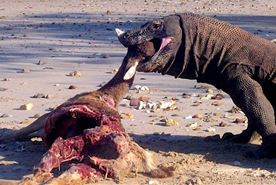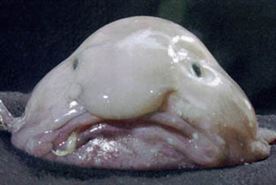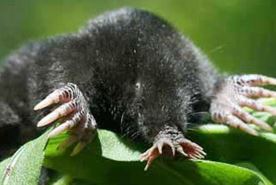Amazing Animal Facts
Noun
dead body of an animal
Komodos are dangerous predators with sharp serrated teeth. They eat almost all of a carcass, consuming flesh, skin and even bones.
Verb
eat (food or prey) hungrily or quickly
Fossil hunters from Europe have discovered one of the largest predators ever to have lived: a whale that could devour other whales, with a mouth 9 ft (2.7 m) long and 7 ft (2.1 m) wide.
Adjective
caught in a trap
Attached to rocks on the sea bottom or on coral reefs, they wait for fish to get ensnared in their venom-filled tentacles.
Adjective
unfit for eating
The blobfish is facing extinction from trawler fishermen, even though it is inedible and lives at depths where it is rarely seen by humans.
Verb
increase something by a large amount
Short-horned lizards are capable of inflating their bodies up to twice their size and, quite amazingly, shoot blood out of their eyes as a defense mechanism.
Adjective
certain to or intended to cause death
The sea wasp is considered the most lethal jellyfish in the world. Each one holds enough venom to kill sixty adult humans.
Verb
hang loosely or laxly
Over 300 manatees loll about in the warm outflow of a power plant in the Gulf of Mexico, fleeing the unseasonable cold.
Adverb
to a great depth psychologically
As profoundly social beings, chimpanzees need relationships. Just like humans, they cry, whimper, laugh, and hoot to express their emotions and feelings.
Phrase
tighten one's lips together into a circle to kiss
Pucker up! While the star-nosed mole is only about the size of a hand, its 22 nose tentacles are hard to miss.
Adjective
relating to light past the violet end of the visible light spectrum
To humans, male and female butterflies may look the same, but butterflies are able to identify each other easily because of ultraviolet markings on their wings.









